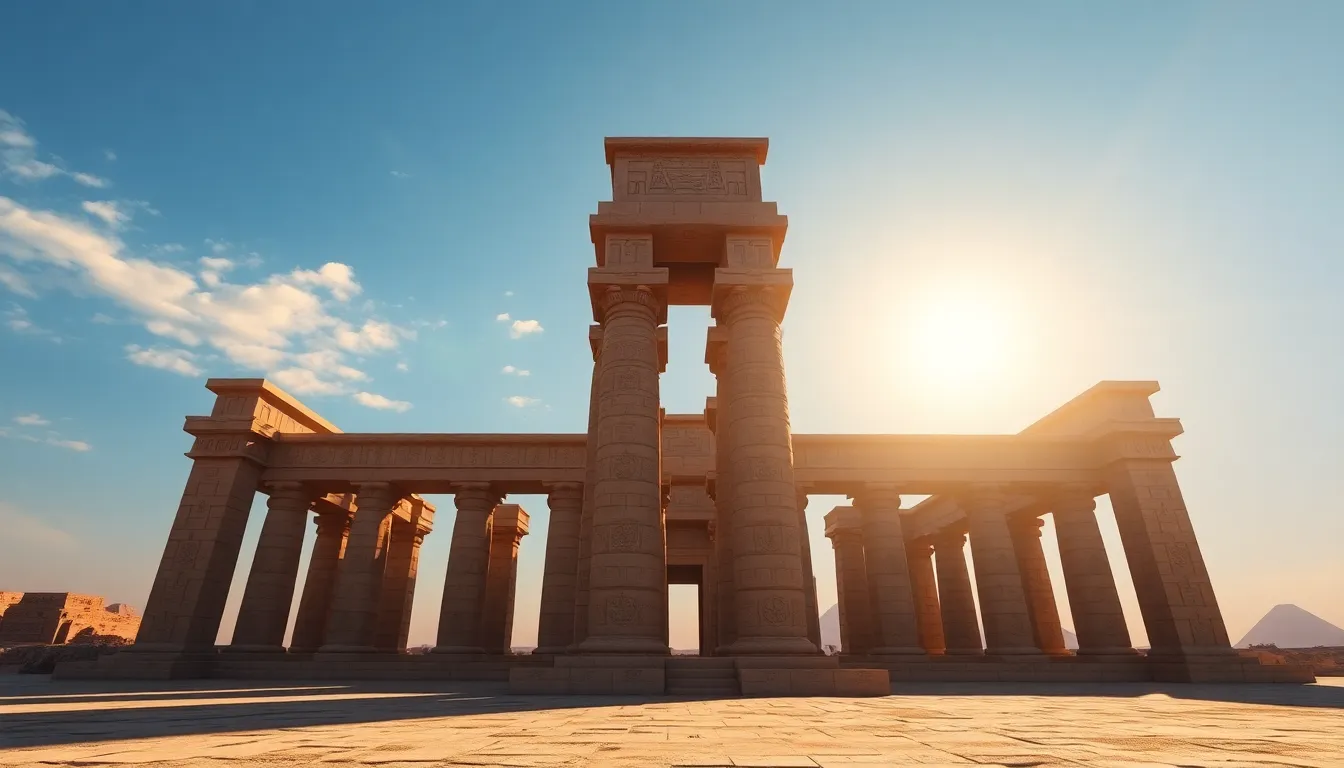The Sacred Geometry of the Temple of Karnak
I. Introduction to Sacred Geometry
Sacred geometry refers to the geometric patterns and shapes that hold symbolic and spiritual significance across various cultures. It is often seen as a bridge connecting the material and spiritual realms, representing the fundamental principles of the universe. In many ancient traditions, including those of Egypt, sacred geometry was used as a guiding principle in architecture, art, and religious practices.
In ancient Egypt, sacred geometry played a crucial role in the design and construction of temples and monuments. The Egyptians believed that their architectural choices could influence the divine and the cosmic order, reflecting their understanding of the universe’s intricate balance. This article aims to explore the sacred geometry of the Temple of Karnak, one of the most significant religious sites in ancient Egypt, highlighting its historical context, architectural layout, geometric symbolism, and its lasting legacy.
II. Historical Context of the Temple of Karnak
The Temple of Karnak is located near Luxor, Egypt, and is one of the largest temple complexes in the world. Its architectural significance lies not only in its size but also in its intricate design, which reflects the religious and cultural values of ancient Egyptian society.
The construction of Karnak began around 2055 BCE during the Middle Kingdom and continued for over a millennium, with various pharaohs contributing to its expansion and renovation. Major renovations occurred during the New Kingdom, especially under rulers such as Hatshepsut and Ramses II.
The temple complex served as a major religious center dedicated to the worship of the Theban triad of gods: Amun, Mut, and Khonsu. It was a place of pilgrimage and a site of significant ritual activities, reflecting the deep spiritual life of ancient Egyptians.
III. The Architectural Layout of Karnak
The Temple of Karnak covers an area of approximately 200 acres and consists of several temples, chapels, and other structures. Its layout is meticulously organized, incorporating various geometric principles to create a harmonious space.
Key components of the temple complex include:
- The Great Hypostyle Hall: This grand hall features 134 massive columns arranged in a specific geometric pattern, creating a sense of awe and reverence.
- The Sacred Lake: Symbolizing the primordial waters of creation, this lake reflects the temple’s architectural grandeur.
- The Obelisks: Tall, four-sided monuments that often symbolize the rays of the sun and are aligned with celestial bodies.
The design of these structures is not only functional but also symbolic, representing the connection between the earthly realm and the divine.
IV. Geometric Patterns and Symbolism
The Temple of Karnak is adorned with various geometric shapes, including circles, triangles, and squares. Each shape carries its own symbolism:
- Circles: Representing eternity and the cyclical nature of life.
- Triangles: Symbolizing stability and the connection between the earth and the heavens.
- Squares: Reflecting balance and order in the physical world.
The relationship of these geometric patterns to Egyptian cosmology is profound. The Egyptians believed that the universe was created from chaos through the intervention of the gods, and geometric forms embodied this transition from chaos to order.
Specific areas within the temple complex, such as the sacred altar and the entrance pylon, exemplify the use of sacred geometry in their design. The careful arrangement of these spaces fosters a spiritual atmosphere conducive to worship and reflection.
V. The Role of Astronomy in Sacred Geometry
Astronomy played a pivotal role in the design of the Temple of Karnak. The temple is aligned with significant celestial bodies, such as the sun and certain stars, reflecting the Egyptians’ deep understanding of the cosmos.
Key aspects include:
- Solar Alignments: The temple’s main axis is aligned with the sunrise during the winter solstice, emphasizing the importance of solar worship.
- Lunar Cycles: Rituals were often timed according to lunar phases, highlighting the connection between the temple’s activities and celestial events.
The observations of celestial movements not only influenced the temple’s design but also the timing of religious festivals and ceremonies, reinforcing the connection between the divine and the natural world.
VI. The Influence of Sacred Geometry on Art and Iconography
The carvings, reliefs, and artwork found throughout Karnak are rich with geometric symbolism. These artistic expressions often depict gods, pharaohs, and mythological scenes, interwoven with geometric designs that enhance their spiritual significance.
Symbolic meanings behind geometric art forms at Karnak include:
- Divine Order: Geometric patterns often illustrate the order established by the gods.
- Cosmic Balance: The use of symmetry in art reflects the balance of forces in the universe.
- Spiritual Pathways: Geometric designs guide the viewer’s eye and mind towards spiritual truths.
This connection between sacred geometry and religious narratives showcases the Egyptians’ understanding of their world as a reflection of divine principles.
VII. Modern Interpretations and Significance
Today, modern architects and scholars view the geometry of Karnak as a testament to the ancient Egyptians’ sophisticated understanding of space, form, and spirituality. The temple complex has influenced contemporary sacred architecture, inspiring designs that seek to embody similar principles.
Ongoing research continues to uncover new insights into the sacred geometry of Karnak, revealing its complexities and the advanced knowledge possessed by ancient Egyptians. The legacy of Karnak serves as a reminder of the importance of integrating spirituality with architectural design.
VIII. Conclusion
In summary, the Temple of Karnak stands as a monumental example of sacred geometry in ancient Egypt. Its historical context, architectural layout, and the intricate relationships between geometric patterns and symbolism highlight the temple’s significance in ancient religious practices.
The enduring legacy of Karnak’s sacred geometry invites us to explore the wisdom of ancient civilizations and their understanding of the cosmos. By studying these principles, we can gain valuable insights into the integration of spirituality and design in our modern world.
As we continue to unravel the mysteries of the past, the sacred geometry of the Temple of Karnak remains a profound testament to humanity’s quest for meaning and connection to the divine.




